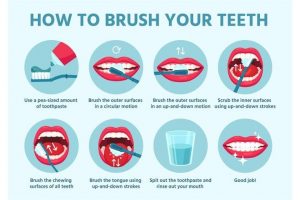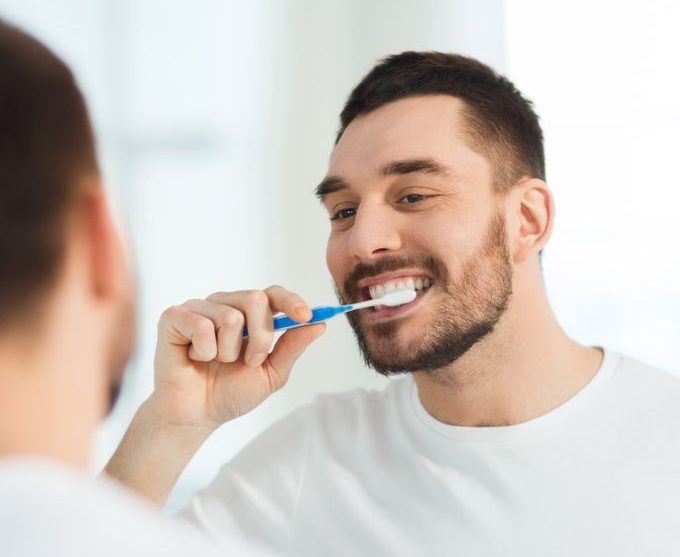To have a fresher breath every morning and evening, to showcase that bright smile now and then, you need to practice the proper way of brushing your teeth.
Brushing your teeth daily gives you the chance to also clean your tongue because you cannot brush your teeth correctly by neglecting the tongue.
It keeps you safe from dental wipes, dental caries, and other medical issues associated with teeth. Little wonder it is advised you brush 3 times a day after each meal.
11 important tips on how to clean your teeth correctly
1. Get the right toothbrush just for your teeth
To know how to clean your teeth correctly, you must know that the kind of toothbrush you use plays its part.
There are two types of toothbrushes
- The electric toothbrushes
- The Manuel toothbrushes
Use the manual toothbrush in the mornings while you use the electric toothbrush at night (that is if you have one) else, use the manual toothbrush for both morning and night.
Experts had advised you to run away from brushes with hard bristles. They advise you use a soft-bristled brush. Because the hardness of your brush does not determine how clean or bright your teeth can become.
Also, most hard brushes cause gum injuries and tooth abrasiveness.
2. Use the right toothpaste
Good toothpaste does not only help remove plaque but also helps strengthen tooth enamel. It’s important to note that fluoride toothpaste is not meant to be swallowed, as taking too much can have serious health consequences.
It should not be used for children under the age of three.
3. Use the right stroke
One of the important tips on how to clean your teeth correctly by positioning your toothbrush at an angle of 45 degrees, gently going forth and backward is the right stroke for brushing.
If you experience pains while brushing as a result of a sensitive tooth, try brushing more gently while making a circle around your teeth.
4. Make it a habit to brush your teeth often
This is very important; you need to draw out a frequent brushing schedule and stick to it. This will help keep your breath and tooth bacteria in constant check.
5. Reduce the time frame you brush
You don’t have to brush for 10 minutes before you feel it is okay. Kindly reduce your brushing time to at least 2 minutes.
6. Eat a balanced diet and reduce your intake of sugary foods
Avoid constant intake of sugary foods as they tend to attract more bacteria to your tooth cavity.
7. Always rinse your toothbrush
You should always rinse your toothbrush after brushing and put it in a safe dry place. Do not expose your toothbrush to bacteria.
8. Always visit your dentist regularly for prevention, treatment, and advice
Endeavor visits your dentist once in a while to run checks and seek professional medical advice.
9. Replace your toothbrush regularly
The bristles will wear out over time, losing their flexibility and effectiveness. You should purchase a new toothbrush every three to four months, or as soon as the bristles start to splay and lose their shape. Visual inspection of the toothbrush is more important than the actual timeline.
10. Use a small amount of toothpaste
Squeeze only a pea-sized amount of toothpaste onto your toothbrush. Applying too much toothpaste causes it to finish sooner. Plus, it increases the risk of you ingesting more fluoride-filled toothpaste, which is very unhealthy.
11. Remember to brush at least twice a day.
Most dentists recommend that you brush at least twice a day — once in the morning and once before bed. If you can fit in a third time somewhere in the middle, even better! Try brushing at a 45° angle as this helps remove plaque and food/drink particles on your teeth better than if you did it normally. You should also try to avoid snacking between meals as much as possible, as this results in more food debris and bacteria building up in the mouth.
Also, these are some more tips in this regard:
- Swish water in your mouth to loosen food particles after each meal.
- Visit a dentist at least every six months for an exam, x-rays, and a cleaning.
- Electric toothbrushes are better because you don’t have to “rub” your teeth — but in general, good brushing habits are much more important than whether or not you use an electric brush.
- Wait 10 minutes before brushing after eating a meal.
- If you want to brush your tongue (which is highly recommended). Make sure not to go too far back down your throat.
- Most people follow the same routine while brushing. Consider starting in a different location each time you brush, to avoid missing the same spots repeatedly.
Warnings
- Don’t brush too hard. Gums are very sensitive tissue.
- Never use someone else’s toothbrush. You can transfer germs, bacteria, and diseases through microscopic cuts in your mouth.
- Do not skip brushing your teeth — skipping out on this vital practice can cause tooth decay.
- Wait at least 45 minutes before brushing your teeth after drinking soda, wine, or acidic juices such as orange juice. Sodas and juices leave residual acids on the teeth, and brushing can damage the enamel
How to brush your teeth properly
- Place your toothbrush at a 45-degree angle to the gums. Aim the toothbrush at a 45-degree angle towards the gum line
- Gently move the brush back and forth in short (tooth-wide) strokes.
- Brush the outer surfaces, the inner surfaces, and the chewing surfaces of the teeth.
- To properly clean the inside surfaces of the front teeth, gently tilt the brush upwards and make several up-and-down strokes and also use a light back and forth motion on the chewing surfaces.
- Spit out the toothpaste after brushing, you do not need to vigorously rinse, as the little amount of fluoridated toothpaste left in your mouth after spitting continues to protect against tooth decay and gives you that fresh breath

In conclusion, brushing your teeth properly should not only be done because of getting a fresher mouth odor or an elaborate smile or self-confidence.
Rather, it should be done for your overall health. When you get to know how to properly brush your teeth, you will find out the proper techniques to remove dental plaque.

